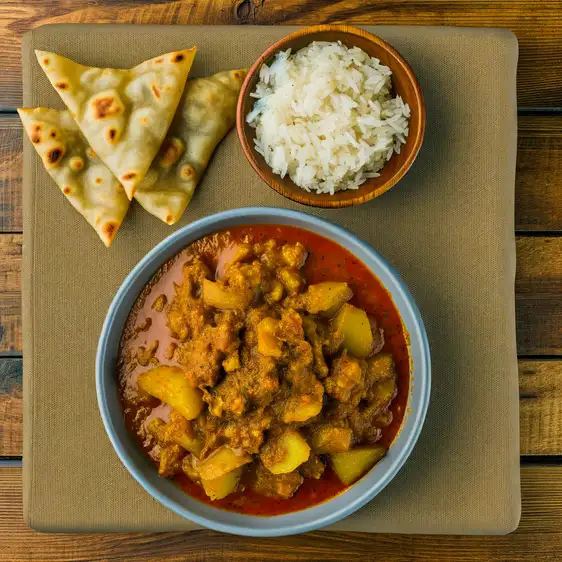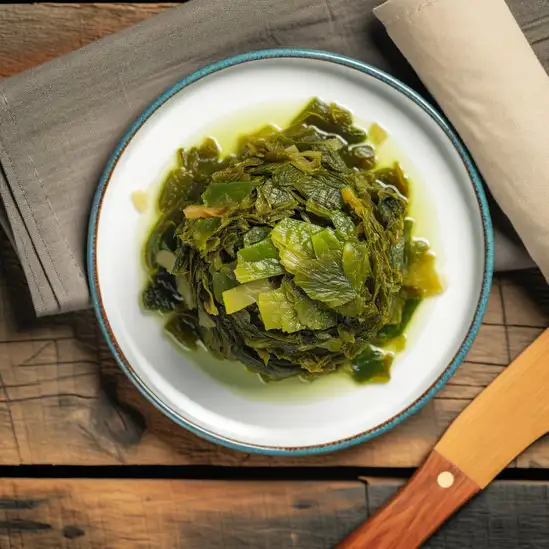



If you ever find yourself craving a place where the air feels fresher and the pace slows just enough to savor every moment,Kalimpong is that kind of town. Nestled in the rolling hills of West Bengal,it’s a charming blend of vibrant markets,colonial-era architecture,and lush greenery that wraps around you like a cozy blanket. Walking through its narrow streets,you’ll hear the gentle chatter of locals,the occasional clink of tea cups,and the distant hum of prayer bells from the monasteries perched on the hillsides. The scent of blooming rhododendrons mingles with the earthy aroma of fresh pine,and if you’re lucky,you’ll catch the sweet fragrance of ripe oranges from the orchards nearby. The town’s colorful bazaars are alive with the chatter of vendors selling everything from handwoven woolens to intricate Tibetan handicrafts. Don’t miss trying the local momos—steamed just right,juicy and bursting with flavor,they’re the perfect comfort food after a day of exploring. What really makes Kalimpong special is its warm,laid-back vibe. It’s a place where cultures blend effortlessly—Tibetan,Nepali,Bengali—and where every corner feels like a story waiting to be discovered. Whether you’re sipping butter tea in a quiet café or watching the sun dip behind the Kanchenjunga peaks,Kalimpong invites you to slow down,breathe deeply,and soak in a world that feels both timeless and refreshingly alive.
The information on this page is currently being reviewed by Tripkliq and should be used as a guide only
Eng word: Hello
Eng pronunciation: Namaste
Local language: नमस्ते
Eng word: Goodbye
Eng pronunciation: Bidaai
Local language: विदाई
Eng word: Thank you
Eng pronunciation: Dhanyabad
Local language: धन्यवाद
Eng word: How much
Eng pronunciation: Kati
Local language: कति
Eng word: Toilet
Eng pronunciation: Shauchalaya
Local language: शौचालय
Eng word: Help me
Eng pronunciation: Malai maddat garnuhos
Local language: मलाई मद्दत गर्नुहोस्
Eng word: Yes
Eng pronunciation: Ho
Local language: हो
Eng word: No
Eng pronunciation: Hoin
Local language: होइन
Eng word: Excuse me
Eng pronunciation: Maaf garnuhos
Local language: माफ गर्नुहोस्
The name 'Kalimpong' is believed to have originated from the Lepcha word 'Kaulim,' meaning 'ridge where we play.' It is said that the area was used as a traditional ground for tribal games and festivities.
Kalimpong was once a bustling trade hub on the ancient Silk Route, connecting Tibet, Bhutan, and India. The town played a significant role in the exchange of goods like wool, salt, and spices.
During the British colonial period, Kalimpong became a favored hill station for the British. The town's architecture still reflects colonial influences, with charming bungalows and churches dotting the landscape.
Founded in 1900 by Reverend Dr. John Anderson Graham, Dr. Graham's Homes is a historic educational institution in Kalimpong. It was established to provide education and shelter to underprivileged Anglo-Indian children.
Kalimpong is home to several ancient Buddhist monasteries, such as Zang Dhok Palri Phodang Monastery. These monasteries house rare Tibetan scriptures and are a testament to the town's rich spiritual heritage.
Scottish missionaries played a significant role in shaping Kalimpong's educational and cultural landscape. They introduced modern education and established schools that continue to thrive today.
Kalimpong served as a key center for Indo-Tibetan relations during the early 20th century. Tibetan traders and monks frequented the town, fostering cultural and economic exchanges.
Morgan House, a colonial-era mansion built in the 1930s, is a popular heritage property in Kalimpong. It offers a glimpse into the town's colonial past and is now a tourist lodge managed by the West Bengal Tourism Department.
Kalimpong is renowned for its floriculture, particularly its orchids, gladioli, and cacti. The town's nurseries have a long history of exporting exotic flowers to various parts of the world.
In Kalimpong, the most common Power Adaptor is Type C, Type D, Type M.







Steamed or fried dumplings filled with vegetables or meat, often served with a spicy dipping sauce.

A hearty noodle soup that is typically made with meat or vegetables, flavored with spices and herbs.

Spicy potato curry made with a blend of local spices, often enjoyed with rice or bread.

A traditional homemade rice-based doughnut, crispy on the outside and soft on the inside, often enjoyed during festivals.

Fermented leafy greens, often served as a side dish or in soups, known for its tangy flavor.

Fried or baked pastries filled with spiced meat or vegetables, popular as a snack or appetizer.

A type of flatbread that is soft and fluffy, typically served with various curries or soups.

Stir-fried noodles mixed with vegetables and sometimes meat, seasoned with soy sauce and spices.
Kolkata feels like stepping into a living,breathing storybook where every street hums with history and heart. The city’s energy is a warm,bustling embrace—chaotic yet comforting,like a favorite old song you didn’t know you loved until you heard it live. Walking through its crowded lanes,you’ll catch the scent of freshly fried kachoris mingling with the earthy aroma of monsoon-soaked earth,while the distant clang of tram bells and the chatter of vendors create a lively soundtrack.
What makes Kolkata truly unforgettable is its soul—deeply intellectual yet wildly creative. It’s a place where poets and artists have left their mark on every corner,from the colonial-era architecture to the vibrant street art. The city pulses with a love for literature,theater,and music,and you can feel it in the air,especially during evenings when cafés fill with animated conversations and the aroma of strong chai.
Don’t miss the chance to savor authentic Bengali sweets like rosogolla and sandesh,or to sit by the Hooghly River as the sun sets,watching ferries drift lazily by. Kolkata’s charm lies in its contradictions—old and new,noisy and serene,simple and sophisticated—all woven together with a warmth that invites you to slow down and soak it all in. Trust me,once you’ve wandered its streets and tasted its flavors,Kolkata stays with you long after you leave.
If you ever find yourself craving a place where the ocean breeze carries stories of adventure and the rhythm of waves sets your pace,Port Blair is where you want to be. This city feels like a gentle invitation to slow down and soak in the raw beauty of island life. The moment you step off the ferry or plane,the salty air mingled with the scent of tropical flowers wraps around you like a warm hug. Palm trees sway lazily against a backdrop of turquoise waters,and the chatter of locals blends with the distant call of seabirds,creating a soundtrack that’s both lively and soothing.
Port Blair isn’t just a gateway to the Andaman Islands; it’s a place where history whispers through the walls of the Cellular Jail,a somber yet inspiring reminder of India’s past. But beyond its historical weight,the city pulses with a laid-back charm—colorful markets burst with fresh seafood,exotic fruits,and spices that tease your senses. Grab a plate of freshly caught fish grilled with local herbs,and you’ll taste the ocean’s essence in every bite.
What makes Port Blair truly special is its blend of cultures and the warmth of its people. You’ll find a mix of indigenous traditions and influences from across India,all coexisting in a relaxed,welcoming vibe. Whether you’re wandering along Corbyn’s Cove Beach at sunset or chatting with fishermen mending their nets,there’s a genuine friendliness here that makes you feel like you belong. It’s a place that invites you to explore,reflect,and simply be.
Imagine stepping into a city that pulses with energy,where every street corner hums with life and stories waiting to be discovered—that’s Mumbai for you. The moment you arrive,you’re wrapped in a vibrant tapestry of sounds:the rhythmic clatter of local trains,the lively chatter of street vendors,and the distant call of temple bells blending with honking rickshaws. The air carries a mix of spices from roadside stalls,mingling with the salty breeze from the Arabian Sea,creating an intoxicating scent that’s uniquely Mumbai.
Walking through its bustling lanes,you’ll see a kaleidoscope of colors—bright saris fluttering in the wind,intricate colonial architecture standing proudly beside sleek skyscrapers,and street art that tells tales of the city’s soul. Mumbai’s character is a beautiful contradiction:it’s fast-paced yet welcoming,chaotic yet deeply rooted in tradition. The city’s heartbeat is its people—dreamers,artists,and entrepreneurs who wear their resilience and warmth like a badge of honor.
And then there’s the food—oh,the food! From the tangy,spicy street-side vada pav that feels like a warm hug,to the rich,aromatic biryanis and fresh seafood by the sea,every bite is a celebration of flavors. Mumbai invites you to lose yourself in its maze of neighborhoods,each with its own rhythm and charm,promising moments of surprise and connection. It’s not just a place to visit; it’s a city that stays with you long after you’ve left.
If you step into Chennai,you’ll immediately feel a pulse that’s both ancient and alive—like the city is breathing stories through its streets. It’s a place where the salty breeze from the Bay of Bengal mingles with the rich aroma of jasmine flowers and sizzling street food. The soundscape is a lively mix of temple bells,the rhythmic clatter of auto-rickshaws,and the distant hum of Carnatic music drifting from open windows. Chennai doesn’t rush; it invites you to slow down and soak in its layered rhythms.
Walking through the neighborhoods,you’ll see a fascinating blend of colonial architecture standing shoulder to shoulder with colorful markets bursting with fresh produce,spices,and vibrant textiles. The city’s heart beats strongest in its people—warm,proud,and deeply rooted in tradition yet open to the world. Festivals here aren’t just events; they’re immersive experiences where you can witness centuries-old rituals,dance,and music that feel like a living tapestry.
And then there’s the food—oh,the food! Imagine biting into a crispy,golden dosa,its tangy chutneys and spicy sambar awakening your senses. Or savoring a steaming bowl of filter coffee that’s as bold and comforting as the city itself. Chennai’s charm lies in these everyday moments,where history,culture,and life blend seamlessly. If you want a city that feels like a warm embrace and a lively conversation all at once,Chennai is waiting with open arms.
A historic port city in Kerala,Kochi is famous for its backwaters,Chinese fishing nets,and nearby islands like Willingdon Island and Vypin Island,offering a blend of culture and natural beauty.
ExploreImagine stepping into a place where the sun kisses your skin,the salty breeze carries the laughter of beachside chatter,and every corner hums with a laid-back yet vibrant energy—that’s North Goa for you. It’s a lively patchwork of golden sands,swaying palms,and colorful shacks where the aroma of sizzling seafood mingles with the faint scent of frangipani flowers. Whether you’re wandering through the bustling markets of Anjuna or watching the sun dip behind the waves at Calangute,there’s a rhythm here that feels both timeless and alive.
What really makes North Goa special is its blend of cultures and carefree spirit. You’ll find Portuguese-influenced architecture standing proudly alongside lively street art,while the music—from mellow acoustic sets to pulsing electronic beats—drifts through the air,inviting you to join in. The locals,warm and welcoming,add a genuine charm that makes you feel like you’re part of a big,sun-soaked family.
And the flavors! Freshly caught fish grilled with spices that tease your taste buds,tangy Goan curries,and sweet,creamy feni that’s perfect for toasting to new adventures. As night falls,the beach transforms into a playground of bonfires and music,where stories flow as freely as the ocean breeze. North Goa isn’t just a destination; it’s a feeling—a place that stays with you long after you’ve left.
Scammers may approach tourists asking for donations for fake charities or causes, often using emotional stories to manipulate them.
Some locals may charge tourists inflated or unofficial entry fees for access to viewpoints or attractions that are otherwise free or have minimal charges.
Shops may sell counterfeit or low-quality items, such as fake organic teas or handicrafts, claiming they are authentic local products.
Scammers may sell fake permits to tourists claiming they are required for visiting certain areas, even when no such permits are needed.
Unlicensed individuals may pose as tour guides and charge tourists for subpar or inaccurate information about the area.
Tourists may be approached by agents claiming their hotel booking is invalid or canceled, and they are redirected to overpriced or low-quality accommodations.
Some taxi drivers may overcharge tourists, especially for short distances or trips to popular tourist spots, by not using meters or quoting inflated rates.
Tourists may be asked to pay unexpected fees for taking photos at certain spots, even if there is no official policy for such charges.
The use, possession, sale, and distribution of narcotic drugs and psychotropic substances are strictly prohibited under India's Narcotic Drugs and Psychotropic Substances Act (NDPS Act). This applies to Kalimpong as well. Tourists should avoid any involvement with illegal drugs, as penalties can include heavy fines and imprisonment.
Smoking in public places is prohibited in Kalimpong, as it falls under the jurisdiction of India's nationwide smoking ban in public spaces. This includes places like restaurants, hotels, parks, and public transportation. Designated smoking areas may be available in some establishments, but tourists should always check local rules before lighting up. Violators may face fines.
Vaping is regulated under India's ban on e-cigarettes, which was implemented in 2019. The production, sale, import, export, distribution, and advertisement of e-cigarettes are prohibited across the country, including Kalimpong. Tourists should avoid carrying or using vaping devices to avoid legal issues.
What are other people saying about Kalimpong?
Recent Social posts about Kalimpong
There is nothing to show you for now.